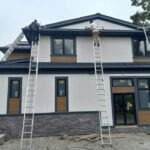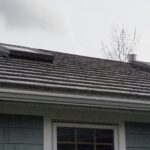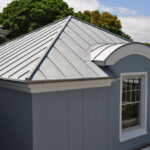Gutters and Metal Roofing
ISSUE
While property owners in most areas desire to have gutters and downspouts on their buildings, the construction industry is not always certain how to properly install gutters with metal roofing.
ANALYSIS
Generally, rain water will exit faster from a metal roof than it will from other roofing materials that have more porous surfaces. Additionally, some metal roofs, particularly those with shake, slate, and shingles designs, effectively “raise” the level of the roof due to their formed thickness.
SOLUTION
When a metal roof is installed on a building, the gutters should be hung as high as possible, still allowing positive slope for proper drainage. Keeping the gutters as high as possible will help prevent water from over-shooting them. Additionally, particularly on large roofs, using 6” gutters instead of the standard 5” is wise. There are several brackets and other hanging methods that fasten strictly into the fascia and these should be used rather than brackets that extend up onto the roof deck. By mounting the gutter as high as possible, its back leg will often extend up under the drip edge for the metal roof. In some cases, the metal roof’s drip edge may need to be notched or penetrated to allow for the hangers. Many metal roof systems require that the underlayment beneath the roof be lapped over the eave edge and behind the drip edge. When this is the case, the back leg of the gutter should be located behind the underlayment as well as behind the drip edge. That way, any condensation that might run down the underlayment will end up in the gutter rather than behind it.




